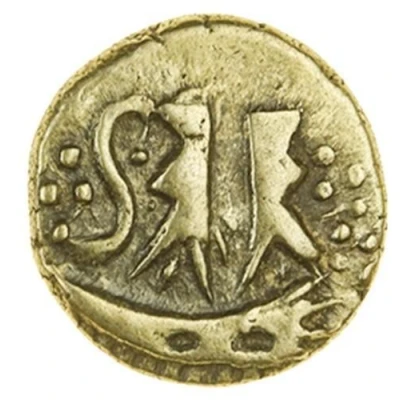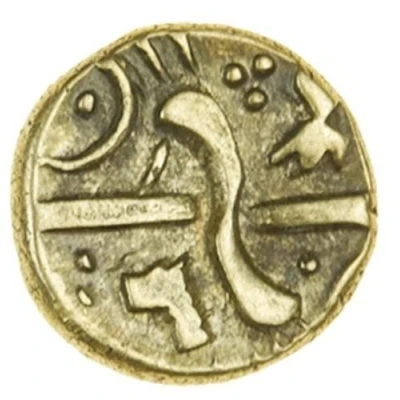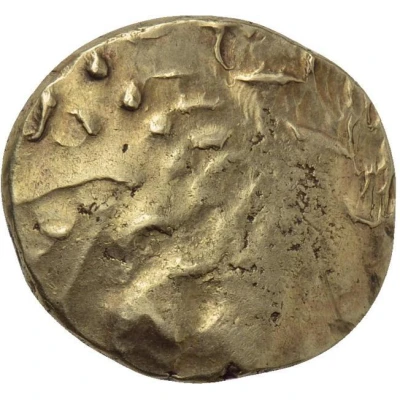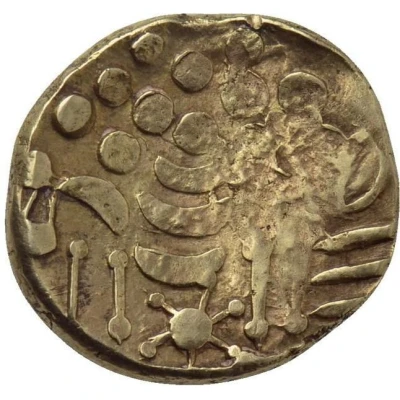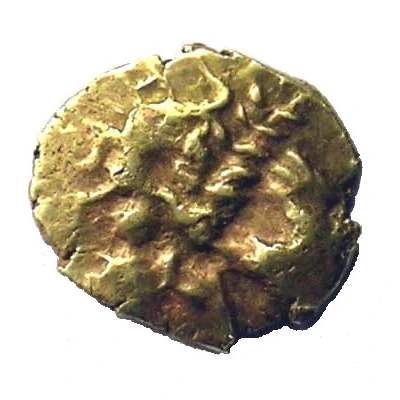
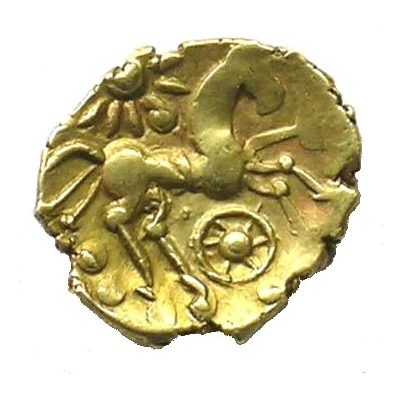

© Saive Numismatique
¼ Stater "Atrebatic B" 55 BC - 45 BC
| Gold | 1.3 g | 14 mm |
| Issuer | Uncertain tribe Brittonic (Celtic Britain) |
|---|---|
| Type | Standard circulation coin |
| Years | 55 BC - 45 BC |
| Value | ¼ Stater |
| Currency | Stater |
| Composition | Gold |
| Weight | 1.3 g |
| Diameter | 14 mm |
| Shape | Round (irregular) |
| Technique | Hammered |
| Demonetized | Yes |
| Updated | 2024-10-10 |
| Numista | N#82476 |
|---|---|
| Rarity index | 93% |
Reverse
Triple-tailed horse right with flower above and spoked wheel below
Comment
Early Uninscribed Coinage (c.120-c.50 BC)British 'Remic' Type. BMC 478-546; Mack#63-67, 69-75
Atrebates are originally a Danube Celtic nomad tribe. They moved to the region of modern Arras before crossing the channel and settling slowly in modern Silchester. Some people make links between British Atrebates and Regnenses (or Regni) as those were former inhabitants of this territory.
Interesting fact
One interesting fact about the Atrebatic B ¼ Stater coin is that it features a unique blend of Celtic and Roman influences in its design. The coin's obverse (front) side depicts a stylized horse, which is a common motif in Celtic art, while the reverse (back) side bears a Latin inscription, "TASCI", which is a shortened form of the Latin word "Tassach", meaning "moneyer" or "coin maker". This blending of cultural styles reflects the complex history of Celtic Britain during the 1st century BC, when the region was under Roman rule but still maintained strong ties to its indigenous Celtic traditions.
